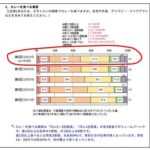The Glycemic Index (GI) is a ranking system for carbohydrates that indicates how quickly a particular food raises blood glucose (blood sugar) levels. Foods with a high GI are rapidly digested and absorbed, resulting in a significant and rapid increase in blood sugar. Understanding which foods have high GI values is crucial for managing blood sugar levels, especially for individuals with diabetes, and can also be beneficial for weight management in the general population.
Understanding the Glycemic Index (GI)
The GI scale ranges from 0 to 100. High GI foods have a GI of 70 or more, indicating that they cause a faster and more significant rise in blood sugar levels. Lower GI foods, on the other hand, have a GI of 55 or less and are digested and absorbed more slowly, leading to a more gradual increase in blood sugar. Moderate GI foods fall in between, with a GI between 56 and 69.
Why is Knowing About High GI Foods Important?
For individuals with diabetes, consuming high GI foods can lead to rapid spikes in blood sugar, making it more challenging to manage blood glucose levels effectively. Consistent consumption of high GI foods can increase the risk of diabetes-related complications. Australian diabetes guidelines emphasize the importance of incorporating low GI carbohydrates into the diet for better blood sugar control.
For those without diabetes, understanding the GI of foods can aid in weight management. High GI foods can cause rapid insulin release, which may promote fat storage. Choosing lower GI alternatives can help maintain stable energy levels, reduce cravings, and support a healthier weight.
Examples of High GI Foods
Here are some common examples of foods with a high Glycemic Index:
- Refined Grains: White bread is a prime example of a high GI food.
Alt text: A close-up of a slice of white bread showing its soft texture, representing a high glycemic index food.
- Breakfast Cereals: Many breakfast cereals, like corn flakes, are highly processed and have a high GI.
- Sugary Drinks: Fruit juice, especially when commercially produced, can have a high GI due to its concentrated sugar content.
- Processed Foods: Instant noodles are typically high in GI and low in nutritional value.
- Rice Products: Rice cakes are often marketed as healthy snacks, but they have a high GI and can cause a rapid rise in blood sugar.
- Certain Vegetables: Potatoes, particularly white potatoes, have a high GI.
Factors Affecting the GI of Foods
Several factors can influence the GI of a particular food:
- Processing: Highly processed foods tend to have a higher GI.
- Cooking Method: Cooking methods like boiling can increase the GI of some foods, such as potatoes.
- Ripeness: The riper a fruit is, the higher its GI tends to be.
- Fiber Content: Foods high in fiber generally have a lower GI because fiber slows down digestion and absorption.
Incorporating Low GI Choices
Making simple substitutions in your diet can significantly impact your overall GI intake. For example, choosing oats (rolled, steel-cut or oat bran) over corn flakes for breakfast, or opting for grains like pasta, rice noodles, quinoa, or barley instead of white rice can help to lower the glycemic load of your meals. Including legumes like lentils, split peas, and chickpeas can also contribute to a lower GI diet. Most fruits and low-fat, unsweetened dairy foods are good low GI options.
Alt text: A colorful bowl of oatmeal topped with fresh berries and nuts, showcasing a healthy and low glycemic index breakfast option.
Low GI Foods Are Not Always the Healthiest Choice
It’s important to remember that the GI is just one factor to consider when making healthy food choices. Some foods may have a low GI but are not necessarily nutritious. For example, foods high in saturated fat like chips, chocolate, and ice cream may have a lower GI due to their fat content, which slows down digestion, but they are not healthy choices.
When evaluating the healthfulness of a food, consider its overall nutritional value, including its fiber content, vitamin and mineral content, and presence of unhealthy fats or added sugars. A balanced diet should include a variety of foods from all 5 food groups, with an emphasis on whole, unprocessed foods.
Tips to Lower the GI of Your Meals
Here are some practical tips to help lower the GI of your meals:
- Add Acid: Use dressings containing vinegar or lemon juice, as acids can lower a food’s GI.
- Increase Fiber: Add fibre to your meal by including vegetables, wholegrains, and legumes.
- Combine with Protein: Combine your carbohydrates with protein to lower the overall GI of your meal.
- Cook and Cool: Eat potato or rice cooked but cooled, for example, as part of a salad. The cooling process can increase resistant starch, which has a lower GI.
Conclusion
Understanding the glycemic index and identifying foods with high GI values can be a valuable tool for managing blood sugar levels and supporting overall health. While the GI is an important factor to consider, it is essential to focus on the overall nutritional value of foods and make balanced dietary choices. If you have questions or need personalized advice on healthy eating, consult with your doctor or a registered dietitian.

